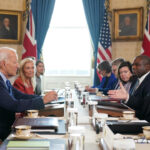The primary measure of service-sector prices, known as supercore inflation, remains a challenge despite expectations of an interest rate cut next week. According to Federal Reserve Chair Jerome Powell, supercore inflation, which excludes food, energy, and housing prices, increased by 0.3 percent in August and is up 4.5 percent from a year ago. While core goods inflation has decreased in recent months, services inflation continues to pose difficulties for the U.S. economy, remaining at 4.9 percent in August. Experts suggest that supercore inflation is a crucial indicator as it reflects how labor costs, a significant expense for businesses, impact inflation trends. However, other metrics, such as the Atlanta Fed’s sticky-price CPI, show that inflation remains elevated. Economists believe that the Federal Reserve’s upcoming interest rate cuts could help address these persistent inflationary pressures, but caution that there is still work to be done to combat inflation effectively.
The ongoing debate in the futures market and among economists revolves around whether the Federal Reserve will proceed with a quarter-point or half-point rate cut. According to the CME FedWatch Tool, traders are divided, with a 51 percent chance of a 25-basis-point reduction and a 49 percent probability of a 50-basis-point cut.
Byron Anderson from Laffer Tengler Investments observed that bond markets have already factored in 10 rate cuts over the next year. Analysts will closely scrutinize the updated Summary of Economic Projections for insights into the direction of policy and economic data.
Fitch’s Coulton predicts that the Fed will take a gradual approach to monetary policy easing due to lingering concerns about high services inflation. On the other hand, ING economists anticipate a more aggressive stance from the Fed, predicting a total of 100 basis points in cuts by the end of the year.
While some monetary policy officials caution against easing too soon, Euro Pacific Capital Management economists warn that if rate cuts lead to inflation, the Fed may have to switch to a tighter monetary policy stance, provided they have the courage to do so.
The upcoming two-day policy meeting of the Federal Reserve is scheduled for September 17 and 18. Please rewrite this sentence.
Source link






